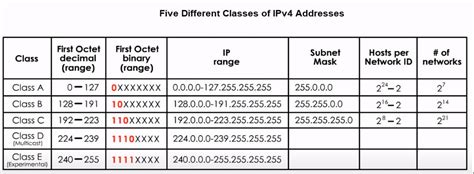The Internet’s ever-growing complexity and demand have long since outstripped the initial foresight instilled in IPv4’s design. Originally set with a 32-bit address space, IPv4’s limiting 4.3 billion addresses are vastly insufficient in today’s hyper-connected world. The blogosphere has been abuzz with discussions on the potential to reclaim IPv4 Class E’s 240.0.0.0/4, a block primarily reserved for future use, and if it can serve as a stopgap measure. However, opinions are divided, and the debate is laden with technical complexities and long-term implications.
One viewpoint is that reclaiming this address space will only delay the inevitable—complete migration to IPv6. Critics argue that such a move reduces the incentive to switch over and perpetuates the issues NAT (Network Address Translation) introduces. NAT’s limitations, from increasing network overhead to complicating peer-to-peer applications, are well-documented. The network industry consensus is that IPv6, with its 128-bit address space and a near-infinite pool of addresses, is the real solution. Adding temporary space with 240.0.0.0/4 might seem beneficial in the short term but only kicks the can down the road, delaying the needed transition and improvements that IPv6 brings.
Another point raised is compatibility. Reclaimed addresses would break existing applications, devices, and firewalls, leading to significant conflicts. IPv4 conservers would argue that remapping and reassigning previously reserved addresses could spell disaster for companies using these spaces privately—irrespective of public directives. IPv6, in contrast, was designed to be an improvement over IPv4, albeit with hurdles such as backward compatibility complaints. Modern networking equipment and most infrastructures currently support IPv6, so why not fully commit to it? This perspective emphasizes the importance of addressing structural upgrades rather than prolonging IPv4’s life cycle.
A recurrent theme in discussions is the apparent missed opportunities with IPv6. Some critics believe more effort could have gone into making the transition smoother, pointing to issues like the lack of universal adoption of stateful DHCPv6. However, others highlight how many of IPv6 enhancements, despite complexities, bring meaningful improvements. It’s worth noting that DNS over IPv6 needs care, given potential misconfigurations leading to service disruptions. Network administrators face challenges daily, so a call for better IPv6 documentation and practical examples could facilitate smoother transitions.
Those advocating for IPv4 reclamation highlight a misunderstanding of immediate needs versus long-term benefits. Engineers and policymakers stress that while 240.0.0.0/4 might offer temporary relief, robust, permanent solutions lie in IPv6 deployment. The move to IPv6 is already happening, although not fast enough for many. A measured approach involving education, stringent policies, and possibly even mandates could significantly accelerate IPv6 adoption. For now, it’s vital to balance current Internet needs with proactive measures that ensure a progressive shift towards a future-friendly protocol – IPv6. For in-depth guidance on transitioning to IPv6, check resources like Internet Society’s IPv6 Deployment Guide or Hurricane Electric’s IPv6 certification programs.


Leave a Reply